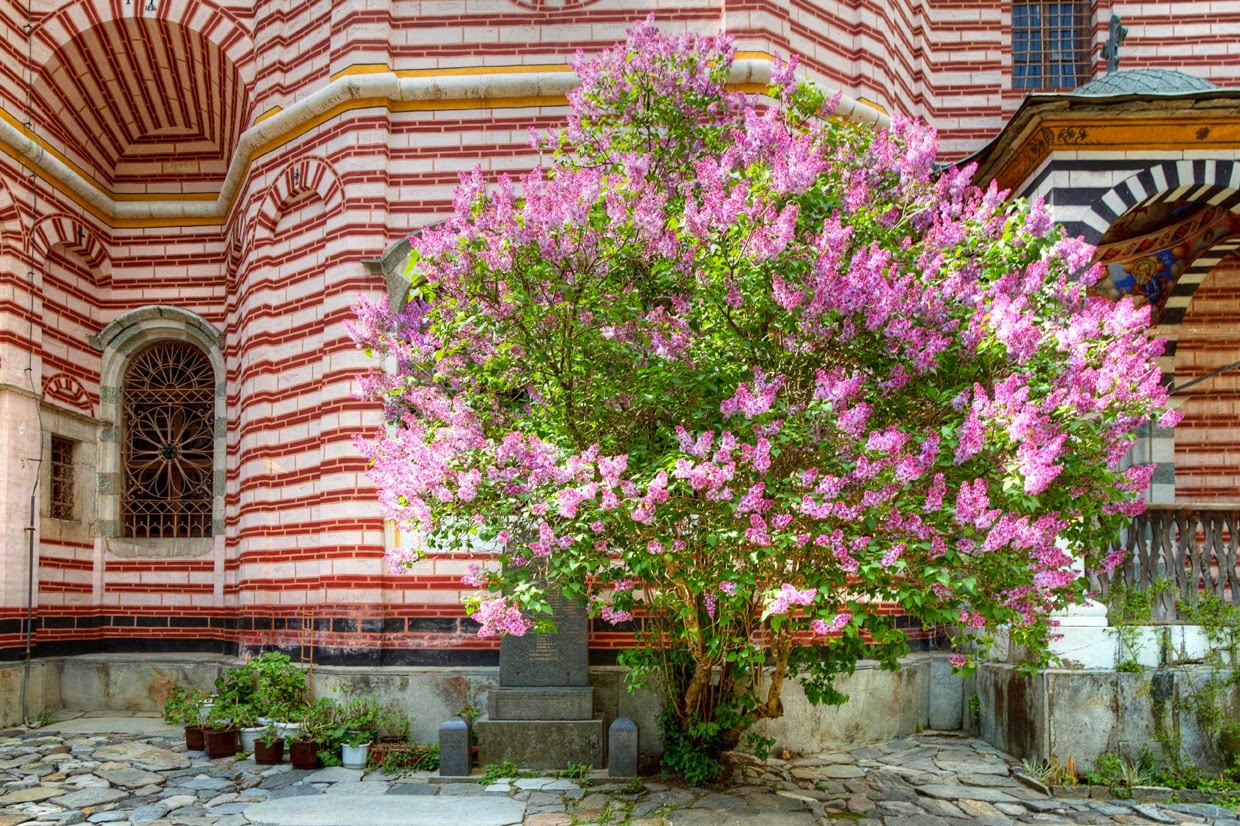After leaving Plovdiv we drove to the Rila Monastery in the Rila Mountains, relying on my GPS to get us there. Did the job but it did get dicey sometimes. We stopped a few times on the way. This is what we saw on the way. Bulgaria is really beautiful. The road below is typical of what we were driving on most of the time..
One of the many villages we saw on the way...
Finally at the Monastery - we parked our car. The entrance was nothing exciting...
Inside the entrance was information all about the Monastery. I took a photo of it, and rather than typing it out, I've placed it here. Click on the image for a bigger size so you can read it. But basically, the Rila Monastery is the largest and most famous Eastern Orthodox monastery in Bulgaria. It is situated in the southwestern Rila Mountains, in the deep valley of the Rilska River at an elevation of 1,147 m (3,763 ft) above sea level. The monastery is named after its founder, the hermit Ivan of Rila (876 - 946 AD). Founded in the 10th century, the Rila Monastery is regarded as one of Bulgaria's most important cultural, historical and architectural monuments and is a key tourist attraction for both Bulgaria and Southern Europe. In 2008 alone, it attracted 900,000 visitors. The monastery is depicted on the reverse of the 1 lev banknote, issued in 1999.
The use of cameras is forbidden in the main church - I took this from the door so technically I wasn't inside!
Outside I found a row of monks prayer seats with the brightly coloured frescoes above. The door is a side door from the main church.
Side view of the main church with the Monks residential quarters behind. The four-storey (not counting the basement) residential part of the complex consists of 300 chambers, four chapels, an abbot's room, a kitchen a library housing 250 manuscripts and 9,000 old printed matters, and a donor's room. The exterior of the complex, with its high walls of stone and little windows, resembles a fortress more than a monastery.
The Tower of Hrelja (1334–1335) is one of the oldest buildings in the complex.
The Front of the main church with the Frescoes glowing. It's the first thing you notice when you arrive.
Three of the five domes.
At the right side of the main church we found some old graves of previous important Monks.
Steps to a basement...
The residential area...

A Gorgeous tree flowering next to a gravesite. It was covered with butterflies and bees...
Looking up to the mountains...
The Dome - probably added later as it has the date of 1870..
More Mountains...
One of the many painted artworks on the residential buildings...
The wall of a chapel - which looks much older so I imagine this was built in the 14th century.
Stunning place to visit and I'm so glad I went. It was something so different to what I've seen before. We then jumped back into the car and headed to Sofia, the capital of Bulgaria.



















































